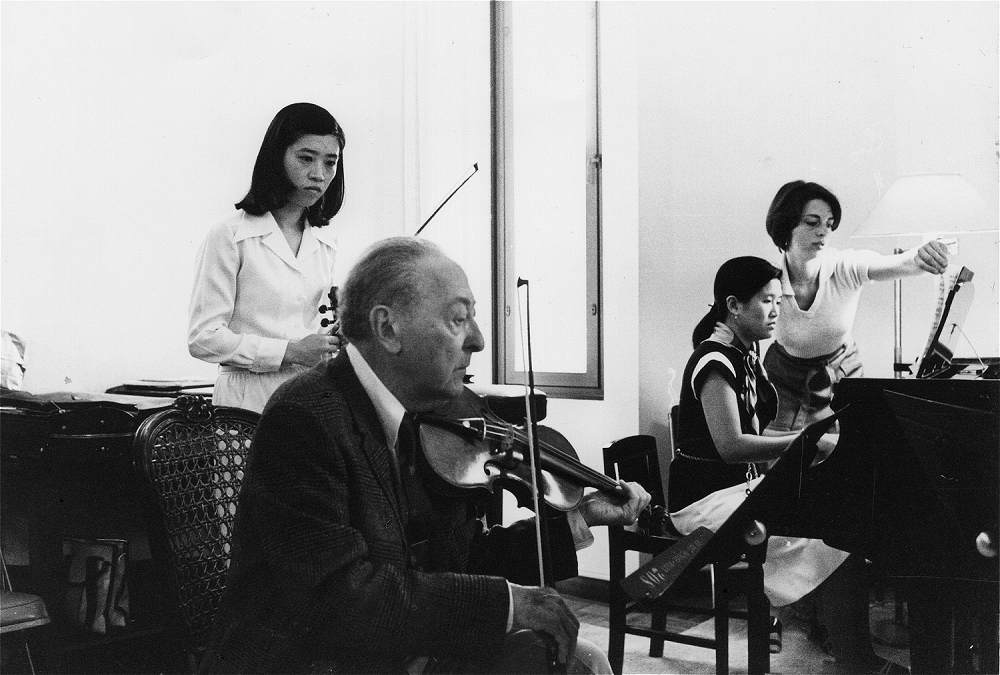Private string teachers have the luxury of not being compelled to plan their lessons. But, argues Philippa Bunting, thinking ahead can only bring advantages for both teacher and student

Discover more Featured Stories like this in The Strad Playing Hub.
This article was first published in the November 2011 issue of The Strad
Most string teachers I know – who teach mainly individual pupils privately – will readily admit that they don’t plan their lessons. Unlike their more trammelled colleagues in the public sector, they don’t have managers looming over them, so they don’t have to.
The best teachers rely on a combination of excellent memory skills and vast experience to give shape to lessons, terms and whole years. Their understanding of both their own instrument and the way of teaching that suits it best is so comprehensive that they can instantly see where a student stands on the ladder of learning, and what new material they are ready for. They adapt what they do to suit not only individual needs, but also personalities and changing moods. Pupils feel central to their lessons and confident that they have been thought about even when they are not there. They feel safe.
We may not have to prepare as thoroughly as some colleagues do, but does that free us entirely from forward thinking?
But what about the other end of the spectrum? I mean the teacher who waits until the student walks into the room before giving them any thought. A spot of strategic questioning – an insouciant ‘What were we playing last time?’ – will get the lesson under way. Provided, of course, that the pupil has brought the correct music. If they haven’t, there are always scales. Or sightreading. From then on, the lesson is gripped in the vice-like triangulation of teacher (authority of greater experience), music stand (authority of printed page) and pupil (haplessly making mistakes – the only way for the lesson to proceed).
Pupils thereby internalise a negative commentary of correction in which failure is inevitable. They feel far from safe. They are not even sure whether the teacher can remember their name.
Writing up a list of things to practise (not how, just what) will finish the lesson off nicely. Whether the pupil practises or not, it’s still a useful reminder. Asking what the student is working on again the following week might seem rather obvious, but a surreptitious glance at the book will help.
Read: How should string teachers deal with naturally unmusical children?
Read: Sound quality should be the main focus of string teaching
OK, the caricature is grotesque, but there are at least some elements of an uncomfortable truth there. Couldn’t this have been any one of us at the outset of our teaching lives? Couldn’t it be us – dare I say it, in a weak moment on a day when events have overwhelmed us – now? It’s also the moment when a habit of creative planning could intervene and make the whole experience better not only for the student, but also for the teacher.
Some people argue that it is ridiculous to plan for individual lessons, since the nature of the transaction is free, open and responsive to the individual. Is it not one of the privileges of being a private teacher that you can lead pupils on their own individual journeys, not always revealing the destination until you arrive?
But as we’ve seen from the grim scenario above, the complete absence of planning can cause havoc. We may not have to prepare as thoroughly and formally as some colleagues do, but does that free us entirely from forward thinking?
Read: How useful are Ševčík exercises for violinists, violists and cellists?
Read: How much should instrumental teachers push genuinely talented youngsters?
Planning can take many forms. Knowing where we are going with each student – while still allowing for the delights of spontaneous exploration – should be a natural part of the job of teaching. However, the discipline of articulating this – perhaps in the desire to protect the special nature of what we do – is something we sometimes shy away from. Yes, playing a stringed instrument is unique and complex, but the benefits of sharing a few key objectives far outweigh any reductive downside.
Perhaps if we think of planning as a kind of mindfulness, it will start to look more attractive. We should hold the pupil in our heads at some point in the week; check our memory of the previous lesson against a mental picture of our ideal one; adjust the following week accordingly; and vow to explore, then introduce, new repertoire and activities such as improvisation. Deciding in advance what to focus on, with some reachable targets on the horizon? That doesn’t sound too bad.
We hardly set off on a trip to the shops without some kind of plan, and yet we can launch into lessons without even the bare outline of one. No amount of planning alone will make a great teacher, but giving it a try can’t hurt.
Do you have an opinion on the issues raised in this article? If you would like to get in touch, please email us at thestrad@thestrad.com
Read: Should string teachers embrace the latest fashions and gadgets?
Read: String players should give credit where credit is due
Discover more Featured Stories like this in The Strad Playing Hub.
This article was first published in the November 2011 issue of The Strad
The number one source for playing and teaching books, guides, CDs, calendars and back issues of the magazine.
In The Best of Technique you’ll discover the top playing tips of the world’s leading string players and teachers. It’s packed full of exercises for students, plus examples from the standard repertoire to show you how to integrate the technique into your playing.
The Strad’s Masterclass series brings together the finest string players with some of the greatest string works ever written. Always one of our most popular sections, Masterclass has been an invaluable aid to aspiring soloists, chamber musicians and string teachers since the 1990s.
This year’s calendar celebrates the top instruments played by members of the Australian Chamber Orchestra, Melbourne Symphony, Australian String Quartet and some of the country’s greatest soloists.














































No comments yet